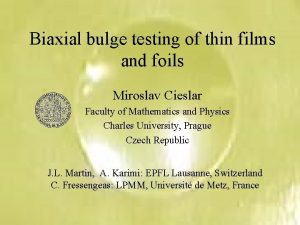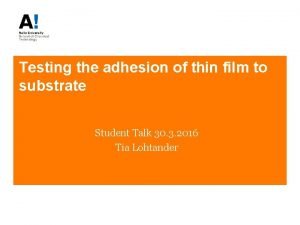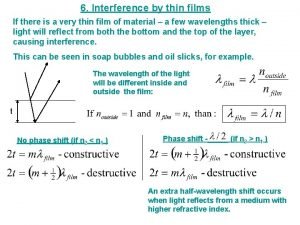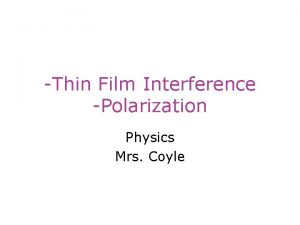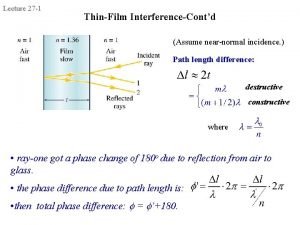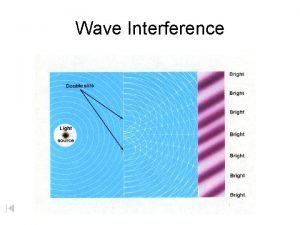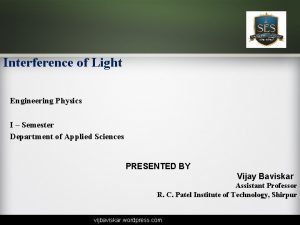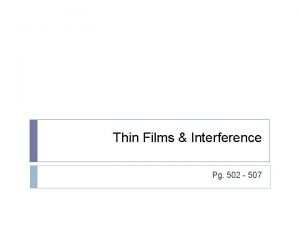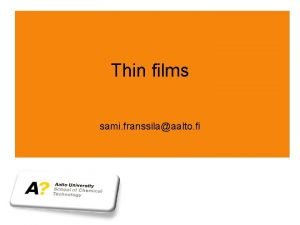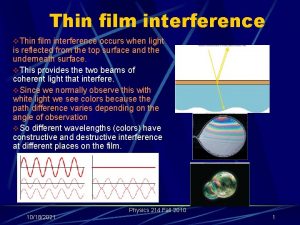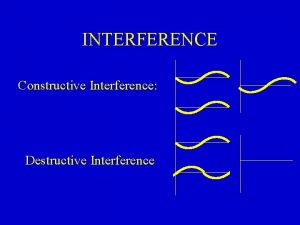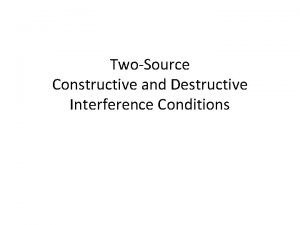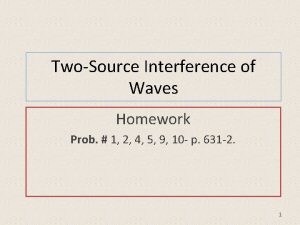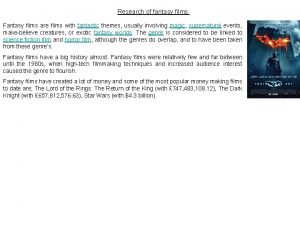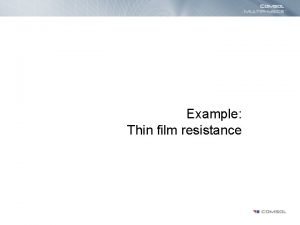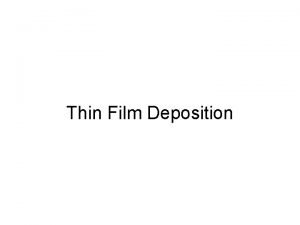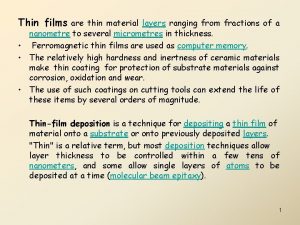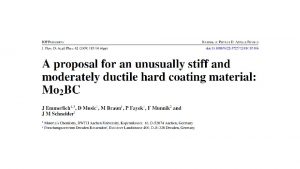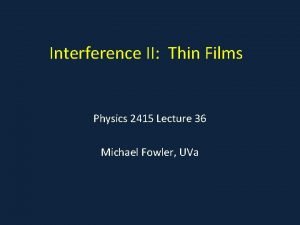Interference Twosource interference of light Thin films will
















- Slides: 16

Interference

Two-source interference of light

Thin films will interfere • The reflections of the two surfaces in close proximity will interfere as they move from the film. • Figure (b) at right displays an explanation and a photograph of thinfilm interference.

Interference between mechanical and EM waves

Thick films and thin films behave differently

Photons, Electrons, and Atoms • To consider the fundamental increment of light, the photon • To study the removal of an electron by an incident photon, the photoelectric effect • To review the concept that atoms absorb or emit line spectra and have quantized energy levels • To consider the concept of the nuclear atom • To follow the model for an atom set forth by Niels Bohr • To explain how a laser works and different ways lasers are constructed and function • To review x-ray production and x-ray scattering

Line spectra • The light emitted when atoms excited by the electrical energy is released takes the form of distinctly colored lines. These lines will always form the same pattern for a given atom, which is very unlike the behavior of white light.

The photoelectric effect

Atomic line spectra

Hydrogen spectra in more detail

The Bohr model • Classical physics predicts that a moving electron would emit radiation and decay. • Bohr postulated stable orbits at quantized energy levels that did not decay.

The laser • Light amplification by stimulated emission of radiation is what the acronym stands for. It’s very much like a standing wave of light. Excited states will naturally radiate on a timetable appropriate for their states, but a light wave passing an excited state increases the likelihood of radioactive decay.

He. Ne laser • Small semiconducting lasers have sold many millions since the inception of CD and DVD devices among personal electronic equipment, but the He. Ne laser has filled many laser pointers.

X-rays and scattering • Information about the quantum nature of x-rays first came from Compton scattering in 1923.

A Compton experiment

Vocabulary: Photoelectric effect =Fotoelektrik olay Discrete wavelength= ayrık dalgaboyu Diffaraction=kırınım Slit=Yarık Adjustment =ayarlama Initial level=ilk düzey Final level=son düzey Raise=yükseltmek Drop=düşme Ground Level=temel düzey Excited Levels=uyarılmış düzeyler Attraction=çekici Stable=kararlı Unstable=kararsız Interfrence=Girişim Postulate=doğru varsayılan kanıtsız önerme Radioactive decay= radyoaktif bozunma Spontaneous=kendiliğinden, doğal Stimulated=uyarılmış Discharge=desarj Conservation=koruma Coherent=eşevreli, uyumlu, yapışık Constructively=yapıcı Destructively=yıkıcı Bright band=Parlak bant Proximity=yakınlık Thin film=ince film Thick film=kalın film
 Working titles films
Working titles films Bulge test thin films
Bulge test thin films Film adhesion test
Film adhesion test Proactive and retroactive interference
Proactive and retroactive interference Retrospective interference
Retrospective interference Interference in thin film
Interference in thin film Film interference
Film interference Thin film interference
Thin film interference Interference in thin film
Interference in thin film Light light light chapter 23
Light light light chapter 23 Into the light chapter 22
Into the light chapter 22 Light light light chapter 22
Light light light chapter 22 Interference of light
Interference of light Interference of light engineering physics
Interference of light engineering physics Long thin bulb
Long thin bulb A long thin light bulb illuminates a vertical aperture
A long thin light bulb illuminates a vertical aperture St trinians films
St trinians films

